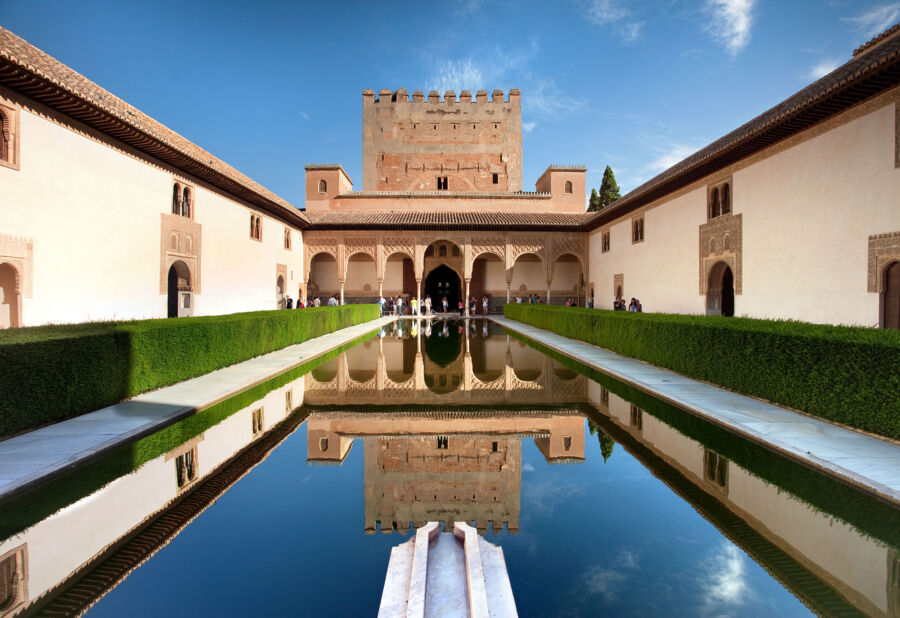
For me, one of the greatest pleasures of traveling is personal acquaintance with great art and architecture, which I collected in a book called "100 best works of Europe" . Here's one of my favorites:
There is no more magnificent Moorish civilization than the Alhambra, the last and largest Moorish palace in Europe.
For seven centuries (711-1492), most of Spain was Muslim, ruled by Islamic Moors from North Africa. While the rest of Europe slept through the Middle Ages, Spain flourished under the rule of the Moors. The end result is the Alhambra, a large complex of palaces and gardens atop Granada's hill. And the highlight is the magnificent Nazarene Palace, where the sultans and their families lived, worked and maintained the palace.
You enter through a field of fragrant myrtles, a world of richly decorated rooms, stucco "stalactites", openwork windows and bubbling fountains. Water, extremely rare and precious in the Islamic world, is the purest symbol of life. The Alhambra is decorated with water, water is everywhere: standing, flowing, covering secret conversations and playing with drops.
Navigating the labyrinth of rooms, it is easy to imagine the Sultan smoking a hookah, sitting on cushions and Persian carpets, thick window curtains and burning incense from lamps. The walls and ceiling are covered with intricate patterns carved from wood and stucco. (If the Alhambra interlude looks like Eschers, then you're wrong: the artist MK Escher was inspired by the Alhambra.) Because Muslim artists avoid creating images of living things, they decorate them with calligraphy—letters that are unevenly cut into Arabic, quoting verses from the Koran and verses. One phrase - "Only Allah triumphs" - is repeated 9,000 times.
The Gardens of the Generalife - richly decorated hedges, sparkling pools, magnificent fountains and summer palaces - where the sultans took a break from court life. Its architect is, in a sense, the Qur'an, which says that Paradise is like a fertile oasis and that "those who believe and do good deeds will enter gardens under which rivers flow" (Qur'an 22:23).
The frequently photographed Lion Court of the Alhambra is named after the 12 marble lion fountains. Four channels direct the water outwards — figuratively to the corners of the earth and literally to the sultan's private rooms. A poem inscribed on the walls of the Alhambra says that "pure waters" flow from the spring, like "a full moon shedding light from a cloudless sky."
The largest room in the palace is the richly decorated Throne Hall - Ambassador's Hall. Here the Sultan, sitting on his throne under the starry dome, receives guests. The ceiling, made of 8,017 pieces of wood (like a giant puzzle), shows the infinite complexity of God's universe.
The throne room represents the passing of the torch in the history of Spain. It was here in 1492 that the last Moorish king surrendered to the Christians. And it was here that the new kings, Ferdinand and Isabella, said to Christopher Columbus, "How wonderful" as they embarked on the voyage to the New World that enriched Spain. But the glory of the Alhambra lives on, adding elegance and grace to Spanish art for centuries.
Today, the Alhambra is a vivid reminder of the fascinating Moorish world that could have flourished throughout Europe, but did not.

